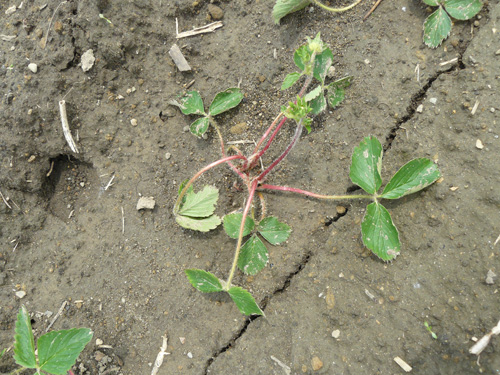Herbicide injury on strawberries
Learn to identify herbicide injury on strawberries.
Chateau (active ingredient: flumioxazin)
When Chateau is applied over non-dormant plants it causes necrosis where the herbicide came into contact with the leaf (Figure 1). Drift of Chateau causes speckling and/or necrosis only where the herbicide touches the leaf (Figure 2). Chateau is not a systemic herbicide, so it doesn't move to new growth after the herbicide is applied.
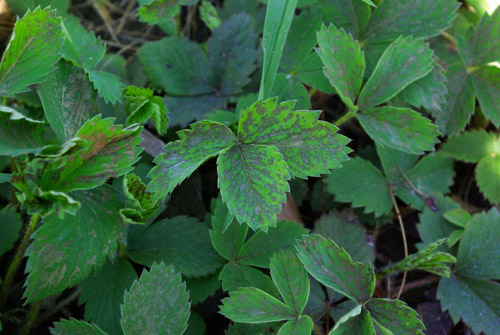
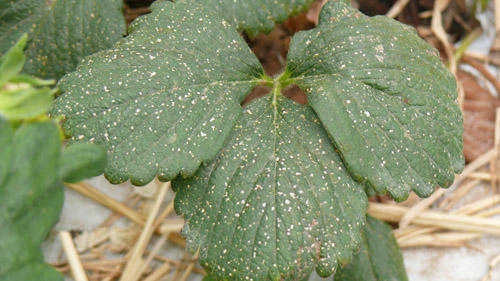
Round-Up/glyphosate (active ingredient: glyphosate)
Strawberries exhibit two types of symptoms of glyphosate injury depending on the time of exposure.
- In fall — Strawberries exposed to glyphosate in the fall may not show symptoms until the following spring. New growth in the spring is pale yellow to almost white, with cupped leaves and a pinkish tinge (Figure 3). This type of injury can occur after a spray drift event or when straw used to mulch strawberries has been pre-treated with glyphosate.
- In spring — Glyphosate drift or application onto actively growing plants in spring causes a distinct bright yellow discolouration (Figure 4).
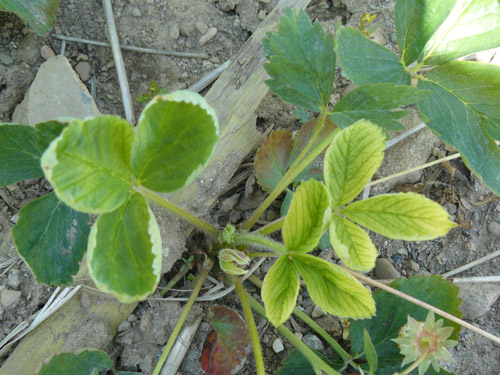
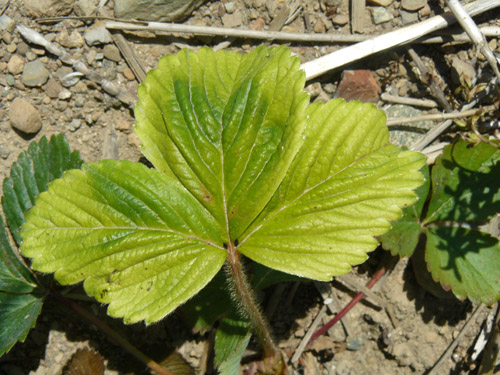
Sinbar (active ingredient: terbacil)
Symptoms may appear a week or more after the product is applied and uptake of it can be directly through the foliage or by the roots. Classic symptoms of Sinbar is the discolouration between the veins of the leaves (Figure 5). The discolouration starts as yellow and then becomes neurotic eventually turning a brown colour. Some varieties are more susceptible to damage by Sinbar (e.g. Mira, Annapolis).
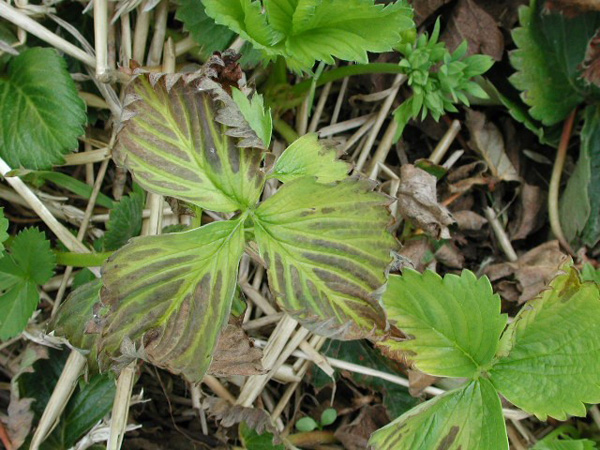
Pursuit (active ingredient: imazethapyr)
This herbicide along with other group 2 herbicides used in field crops are persistent in soil for several years damaging future strawberry plots (Figure 6). Affected plants are slow to start growing, are stunted and may show bright discolouration (Figure 7).
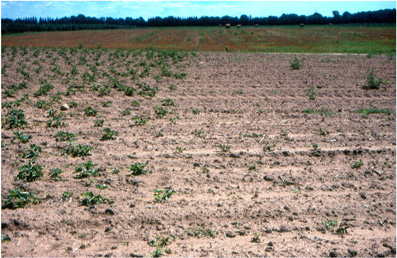
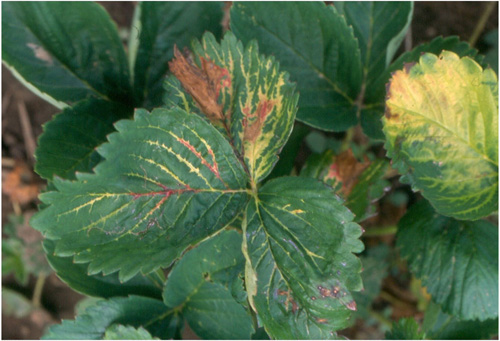
Command (active ingredient: clomazone)
Command drift causes extreme bleaching of leaf tissue on susceptible species (Figure 8).

Gramoxone (active ingredient: paraquat)
Gramoxone only causes damage to the areas that come into direct contact with the herbicide. When contact occurs the leaf tissue becomes necrotic (Figure 9). This injury is commonly confused with common leaf spot.

Betamix (active ingredient: desmediphan/phenmedipham)
Symptoms of this herbicide applied to new plantings consist of a yellow, mottle look to the older leaves which appears after application (Figure 10). The affected plants are able to recover from this damage.

2,4-D (active ingredient: 2,4-D)
When 2,4-D is applied to new strawberry plantings, symptoms of injury include twisted leaves and petioles (Figure 11). The damage is much worse in hot and humid weather , and on certain varieties such as Veestar, but the plants shown here will recover from this damage.
